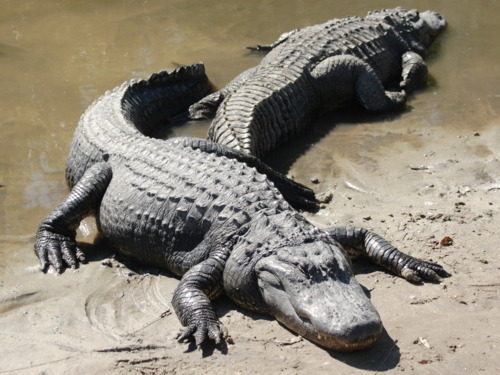 Alligators, not allegators.
Alligators, not allegators.
The Nuclear Regulatory Commission takes allegations about safety and security problems seriously. The NRC has an Agency Allegations Advisor at its headquarters monitoring its policies, procedures, and practices for handling allegations it receives. It has staff in each of its four regional offices dedicated to allegations. And it even has a webpage devoted to allegations.
In 2009, 2010, 2011 and thus far in 2012, the San Onofre nuclear plant in California has the dubious distinction of topping the NRC’s charts for the number of allegations received from onsite sources. In other words, workers at San Onofre report more safety and security problems to the NRC than from any other nuclear plant site in the nation.
San Onofre has more “allegators” than even the nuclear plant in Florida.
And San Onofre isn’t just barely edging out other nuclear plants – no, the site has a commanding lead.
In 2009, the NRC received 33 safety and security allegations from San Onofre’s workers – more than double the second place contender.
In 2010, San Onofre’s workers notified the NRC about 57 allegations – more than the next four sites combined.
In 2011, San Onofre had an off year, chalking up merely 23 allegations but still beating out the Susquehanna nuclear plant by one.
And San Onofre tops the list, so far, in 2012.
Since January 2008, the NRC received 137 allegations from San Onofre workers. Susquehanna’s workers are in distant second with only 86 allegations turned into the NRC.
The way it’s all supposed to work is that workers at nuclear power plants feel free to raise safety and security concerns with their supervisors, or via an ombudsmen or other alternative process. The workers are supposed to feel free to raise these concerns without fear of retaliation for having done so and with the reasonable expectation that management will resolve the concerns appropriately.
It’s not been working that way at San Onofre for several years now.
Workers at San Onofre have been turning to the NRC with their safety and security concerns in chart-topping numbers. Either they fear reporting concerns internally, feel that it’ll be a waste of time to report concerns internally, or have reported concerns internally only to have them ignored. That’s not how it should be.
Our Takeaway
There’s a cliché about safety in numbers. But not in these numbers.
Somebody has to top this NRC list each year. But it shouldn’t be the same somebody year after year.
When workers at a nuclear power plant do not trust the company with their safety and security concerns, why should the public, elected officials, and the NRC trust the company?
The NRC will not allow the company to restart San Onofre Unit 2 until the agency agrees that the cause of steam generator tube erosion has been determined and addressed. It would seem equally prudent for the NRC to require the company to determine and address the reason workers’ trust in management has also eroded.
“Fission Stories” is a weekly feature by Dave Lochbaum. For more information on nuclear power safety, see the nuclear safety section of UCS’s website and our interactive map, the Nuclear Power Information Tracker.
